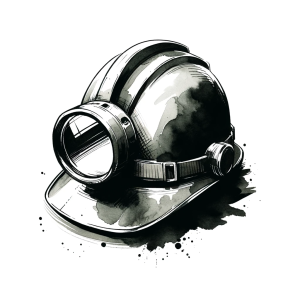
Understanding Railway Suicides: A Deeper Look into Sociodemographic and Psychosocial Factors
The tragic phenomenon of railway suicide has been a topic of concern for public health practitioners for years. A recent study, Sociodemographic and psychosocial risk factors of railway suicide: a mixed-methods study combining data of all suicide decedents in the Netherlands with data from a psychosocial autopsy study published in BMC Public Health, sheds new light on this issue. This comprehensive research combines nationwide data and in-depth interviews, offering crucial insights for public health initiatives and preventive strategies.
Unpacking the Data: Key Findings
The study analyzed suicides in the Netherlands from 2017 to 2021, focusing on cases of railway suicide. Key findings revealed that young individuals, especially those under 30, natives of Dutch origin, and those living in multi-person households or rural areas are more likely to die by railway suicide. Intriguingly, a higher educational level and household income above 150,000 euros also emerged as significant predictors.
The Psychosocial Autopsy: Understanding the Why and How
A unique aspect of this study is the psychosocial autopsy. Disclaimer; this method was unfamiliar to me, so let’s dig a little deeper into what it entails.
The psychosocial autopsy is a qualitative research method that aims to reconstruct the psychological and social circumstances leading up to an individual’s suicide. Unlike traditional autopsies that focus on physical causes of death, psychosocial autopsies explore the personal, interpersonal, societal, and environmental factors that might have contributed to the suicide.
Methodology of the Psychosocial Autopsy in the Study
- Selection of Cases:
- The study targeted a specific subset of suicide cases – those that resulted from railway incidents.
- The cases were selected from a pool of all suicides recorded in the Netherlands between 2017 and 2021.
- Interviews with Informants:
- The core of the psychosocial autopsy method involves conducting in-depth interviews with people who were close to the deceased, such as family members, friends, or coworkers.
- These informants provide insights into the victim’s mental state, social interactions, life stressors, and other relevant factors leading up to the suicide.
- Data Collection:
- Interviews were designed to be comprehensive and structured, yet flexible enough to allow informants to share their perspectives freely.
- Interviewers collected data on various aspects, including the victim’s personal history, mental health, significant life events, and the circumstances surrounding their death.
- Analyzing Data:
- The study employed thematic analysis to identify patterns and themes in the interview data.
- Researchers looked for commonalities and differences in experiences across different cases to identify risk factors and precipitating circumstances.
- Ethical Considerations:
- Given the sensitive nature of the subject, ethical considerations were paramount.
- Informants were screened for psychological vulnerability, and participation was strictly voluntary, with provisions for psychological support if needed.
- Triangulation of Data:
- To ensure the validity and reliability of the findings, the study triangulated the interview data with other sources of information, such as medical records or suicide notes, when available.
- Integration with Statistical Data:
- The qualitative data from the psychosocial autopsies were integrated with quantitative data from national statistics to provide a more comprehensive understanding of the phenomenon.
This method provided a deeper understanding of the victims’ lives and the circumstances leading up to their suicides. The study identified several patterns among the victims, such as young adult males with autism spectrum disorder striving for autonomy and middle-aged males with mood disorders living with family.
The Value
The value of psychosocial autopsies in suicide research is substantial. Firstly, this method provides a holistic perspective, offering a more comprehensive view of the factors contributing to suicide than what can be derived from statistical data alone. It illuminates the intricate details of an individual’s life, which might be overlooked in quantitative analyses. Secondly, psychosocial autopsies are instrumental in understanding the complex dynamics involved in the lead-up to a suicide. They delve into the interplay of personal, social, and environmental factors, uncovering the nuanced and often interwoven elements that contribute to such a tragic decision. Finally, the insights gained from psychosocial autopsies are invaluable for informing prevention strategies. They enable the development of more effective and targeted approaches to suicide prevention, tailored to address the specific circumstances and needs identified through these detailed investigations. Thus, psychosocial autopsies are not just a method of research; they are a crucial tool in the ongoing effort to understand and prevent suicides.
Implications for Public Health Practitioners
Addressing Specific Risk Groups
The study’s findings emphasize the need for targeted interventions. Public health practitioners should focus on:
- Young Adults: Tailoring preventive measures and communication strategies to resonate with young adults is crucial. Campaigns like the Australian Rail Safety Week could serve as a model.
- Individuals with Autism Spectrum Disorder: Developing interventions to enhance communication and problem-solving skills, particularly in educational and workplace settings, can be beneficial.
- Middle-Aged Males with Mood Disorders: Integrating psychiatric care with psychosocial support and providing assistance to their families can be critical in preventing railway suicides in this demographic.
Enhancing Railway Safety
The study advocates for continued investment in railway safety, such as training personnel, installing barriers, and exploring automated interventions like blue lights or information signs near crossings and psychiatric facilities.
Moving Forward: Research and Prevention
While the study offers groundbreaking insights, it also highlights the need for further research, particularly regarding the cost-effectiveness and feasibility of proposed interventions. Future studies could focus on developing and evaluating specific preventive strategies tailored to the identified risk groups.
Conclusion: A Call to Action
This study is a call to action for public health practitioners. By understanding the sociodemographic and psychosocial factors that contribute to railway suicides, we can develop more effective prevention strategies. It’s not just about saving lives; it’s about understanding the complex interplay of factors that lead individuals to such tragic decisions and intervening in a way that resonates with their unique circumstances.
Empower Your Public Health Journey – Subscribe and Transform!
Unlock the transformative power of knowledge with ‘This Week in Public Health.’ Each issue is a treasure trove of insights into crucial research, community health achievements, and advocacy strategies. Don’t just read about change – be the agent of it. Subscribe for free and start making an impact with each edition!



